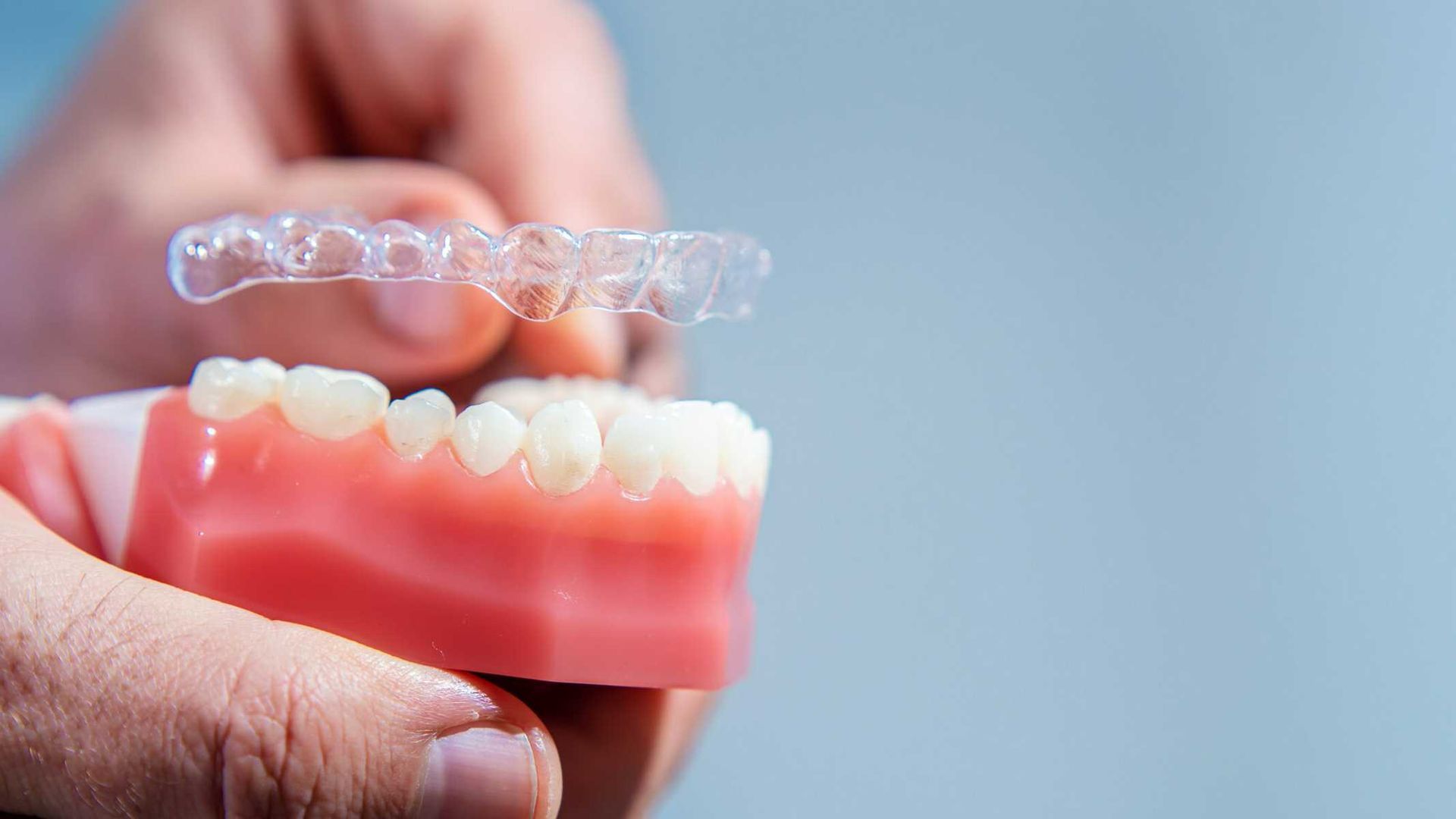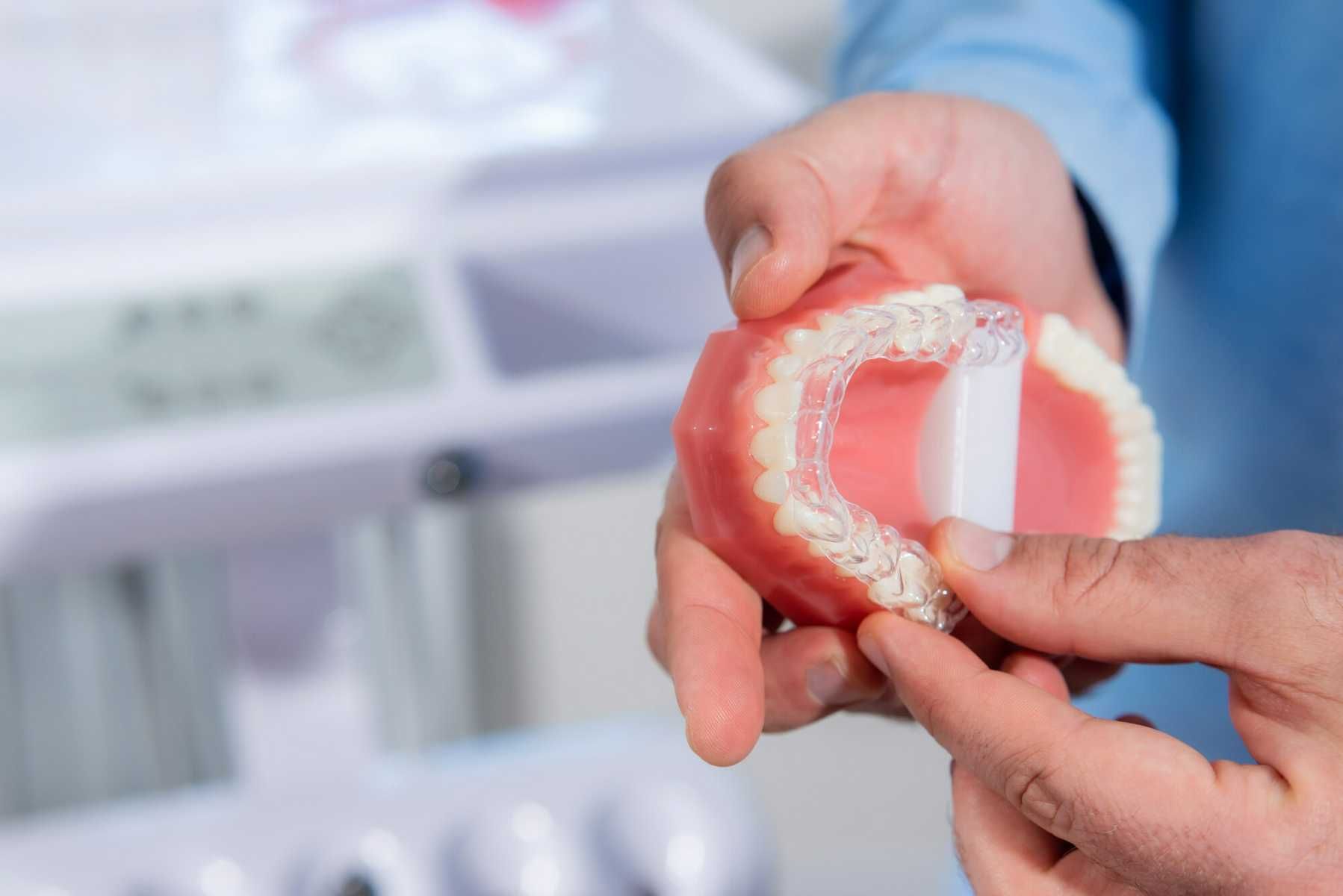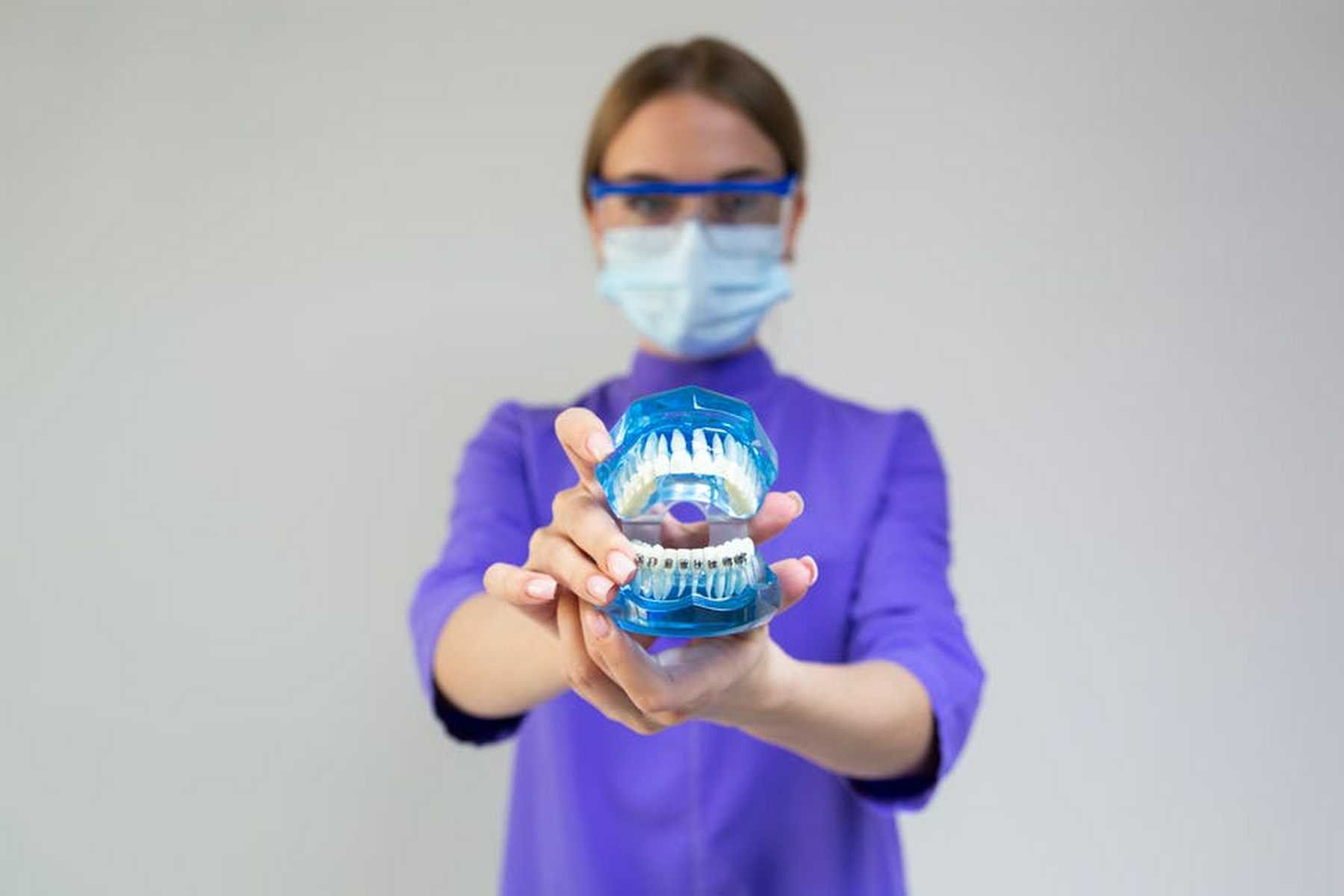Blog Layout
The Difference Between Traditional Braces & Invisalign
Dr. James May • Jul 24, 2019
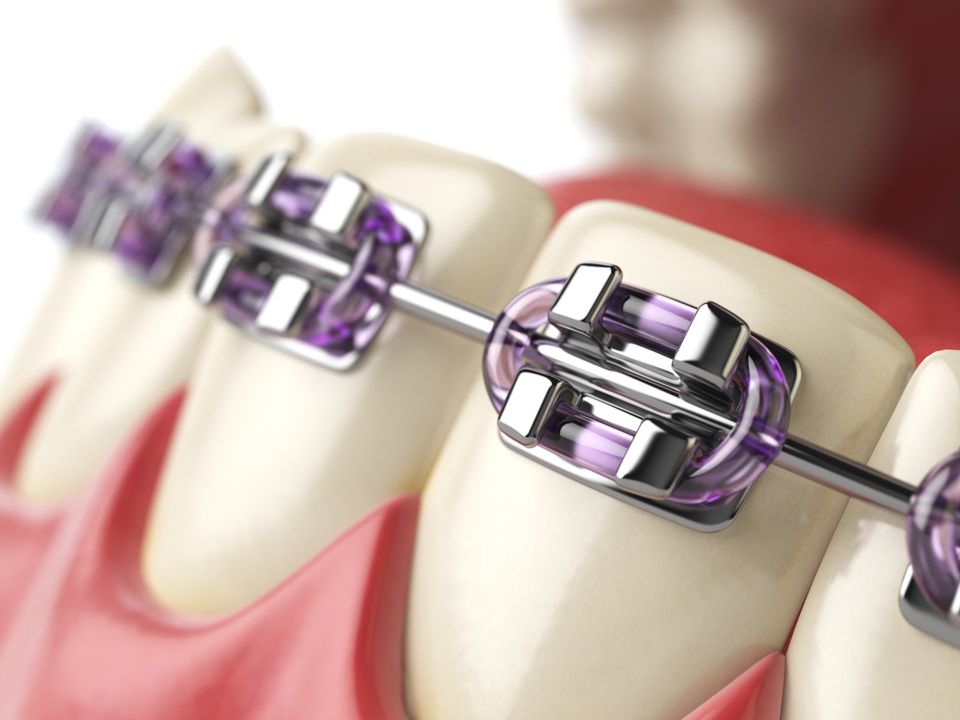
When you meet someone new, one of the first things you tend to notice about them is their smile. For
those who have crooked teeth or perhaps an overbite, this statement may have them feeling a little self conscious. Obtaining a beautiful, straight smile through orthodontics is not only improving your
appearance and self-esteem, but also assisting with health benefits as well. There are so many more
options of orthodontics to choose from now, you may have trouble choosing which one is best for you.
For help determining which route is best, Dr. James May is your experienced orthodontist in Houston TX
that
can assist. Below is a guide that will help you understand the differences between the two most popular
orthodontics, traditional braces and Invisalign.
Invisalign has become wildly popular as an orthodontic treatment because it is meant to be “invisible”
while still fixing your teeth. Invisalign is a set of clear plastic trays that have been molded to your own
teeth from computer generated images. These trays are to be worn 24 hours a day and will be changed
every two weeks until the desired teeth position has been reached.
Invisalign is most effective for individuals whose tooth movement is not overly complicated, and mainly
trying to achieve aesthetic improvement. It is also ideal for those who do not want anyone to know they
are wearing braces, and will still feel comfortable in social settings while obtaining straighter teeth.
Invisalign also offers comfort and does not hinder speech while wearing them. Many patients will report
that they have less social anxiety or self-esteem problems while wearing Invisalign because they feel like
others are not constantly staring at their teeth.
Traditional dental braces may not be invisible when wore, but they can fix more problems you may have
than Invisalign trays. Dental braces have brackets that are affixed to each individual tooth. A wire then
attaches to each bracket, creating slight pressure which supports movement of the teeth into the
desired position. Braces can correct even the most complicated cases for realignment such as closing
gaps, correcting malocclusion (crooked or overcrowded teeth), along with under or over bites.
Whereas Invisalign is removable, braces are not, which may be benefit the speed of the correction
process. According to some patients, braces work moving misaligned teeth in a short time frame. If a
patient’s bite is abnormal, traditional braces are going to work more efficiently at correcting this. Having
a straight, beautiful smile boosts one’s confidence, but it can also benefit one’s health in other ways
such as prevention of tooth decay, jaw erosion and may even improve digestion.
The last big difference between Invisalign and traditional dental braces is cost. Traditional braces tend to
cost less and be much more affordable than Invisalign trays. Braces, which stay affixed to the teeth, only
have to be slightly adjusted when going in for check-ups. Invisalign trays have to be produced every few
weeks to help keep your teeth moving into the desired position.
Ultimately it comes down to your specific needs in orthodontic care and Dr. J May Orthodontics can help
determine those needs.
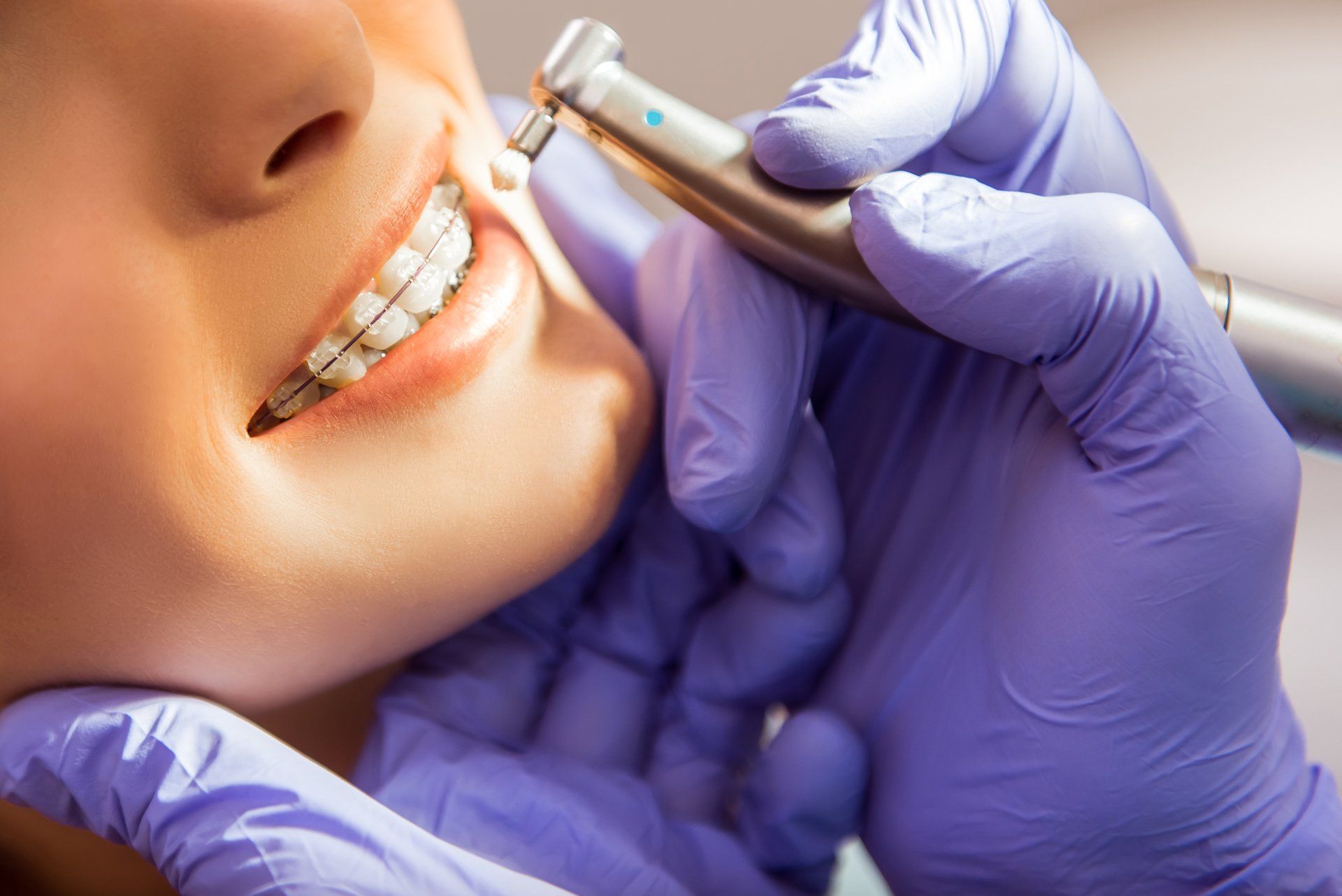
By Dr. James May
•
01 Jul, 2021
Alright, so you have just gotten your braces taken off and your smile is looking fantastic... what’s next? The retainer! That’s right- it does not matter what type of orthodontic treatment you received such as traditional metal braces or clear aligners, everyone has to wear a retainer in order to help keep your newly straightened teeth in their positions and not revert back to their original spots. So now your question may be, how long do I have to wear my retainer? Orthodontists will recommend that you should be wearing your retainer for 12 hours or more every day, following the first 8 weeks after your treatment ends. This helps to ensure that your teeth, which have just spent months moving to this new spot, do not shift as these 2 months afterwards they are the most susceptible to moving. After this time, your Houston orthodontist such as James May Orthodontics, may advise from wearing them for most of the day to nighttime only. Make sure you only switch after your orthodontist gives you their approval that your teeth are not going to shift. If you prefer to wear your retainer longer even after the orthodontist gives his thumbs up, that is not going to harm your smile in anyway – just make sure you are taking them out when you eat and keep them clean! Teeth are pretty amazing little pieces of our bodies and they are incredibly dynamic. Unless they are held into place after your treatment, they will continue shifting, and after all the time and effort going through braces, do you honestly want to jeopardize that progress? Wearing the retainer as instructed will help to reduce the risk of shifting teeth. Your orthodontis is also going to instruct you to wear your retainer to bed every night for at least the first year after treatment. After a year, or when through your orthodontists instruction, you can begin to wear them every other night. After another year a lot of patients will opt to wear theirs only a few times a week during their sleep routine. Some people are more prone to having their teeth move fiercely than others and after a while you may find your retainer a little tight as you put it on. Talk with your orthodontist to see your options. There are different types of retainers, however, the same rule of wear still applies to them all. The Hawley retainers are going to be the most common one people recognize. These are made of acrylic and metal. The Essix retainer has the appearance of as an Invisalign or ClearCorrect aligners, however, these tend to be a little more durable and sturdy as they are going to be lasting a little longer than the average aligner tray. The final retainer is a permanent one. Sure, technically this one does not a set amount of time you need to wear it, as it does not come out. It is attached to the back of your teeth and is not visible from the front. No matter which type of retainer you and your orthodontist agree is the best choice for you, the function for all of them is to serve the purpose of keeping your teeth straight and not reverting back to how they were.

By Dr. James May
•
07 May, 2021
We all know that having braces is the common method of correcting crooked teeth and helping to improve your misaligned bites, but did you know that there is some prep work to be done before you get your pearly whites attached with some metal? One of these preparation tactics your orthodontist could use is by placing spacers in between some teeth. Most of the time, those who are getting traditional braces will most likely have orthodontic spacers. The main purpose of spacers is to make sure there is enough space between certain teeth (hey, molars we are looking at you). The reason for this small distance is to make sure your orthodontist has enough room to attach and install your braces. Traditional metal braces use brackets and wires that are connected to your teeth. These wires are connected and anchored to rings, or metal bands. Since back teeth are usually packed and wedged close together, these spacers help to create that extra room for installing those metal bands. To insert your spacers, it is really a very simple process. Your orthodontist will use a small device or even dental floss to help stretch out the spacers first, warm them up a bit before use, if you will. Then, once you’re sitting in the chair and mouth open wide, each one will be wiggled into place between the predetermined teeth. Spacers are important to help gain that extra space, but typically do not need too long to begin their work. Most orthodontist will insert spacers roughly a week before the traditional braces are scheduled to go on. As simple as spacers are to put in, they are simply as removed, and if they have their job correctly that space will have widen enough for them to easily slide out. While most patients do not report major pain from spacers, there can be a feeling of slight pressure or pinching. However, this feeling is quickly reduced with over the counter pain medication, such as Aspirin, and should not last more than a day or two. Each case and patient is unique, therefore not all treatment plans are alike. Consulting with an orthodontist or dentist beforehand will help to better understand if spacers or braces are needed. Spacers can be made of many different materials, however, the most common types are going to be rubber and metal. Because they are still a part of the orthodontic treatment plan, spacers are typically included in to cost of braces. Braces in general can range anywhere from $3000 - $7000, depending on treatment plan. While there are payment plans available, most dental insurance policies can help cover costs. Check with your provider to see whether they cover orthodontic treatments, or find out from your Houston orthodontist , such as the expert team at James May Orthodontics, to see what may be available for you. If you are interested in learning more about spacers or about the orthodontic treatment plans available, schedule a consultation today with James May Orthodontics today!
BRACES STARTING AT $129/MONTH

